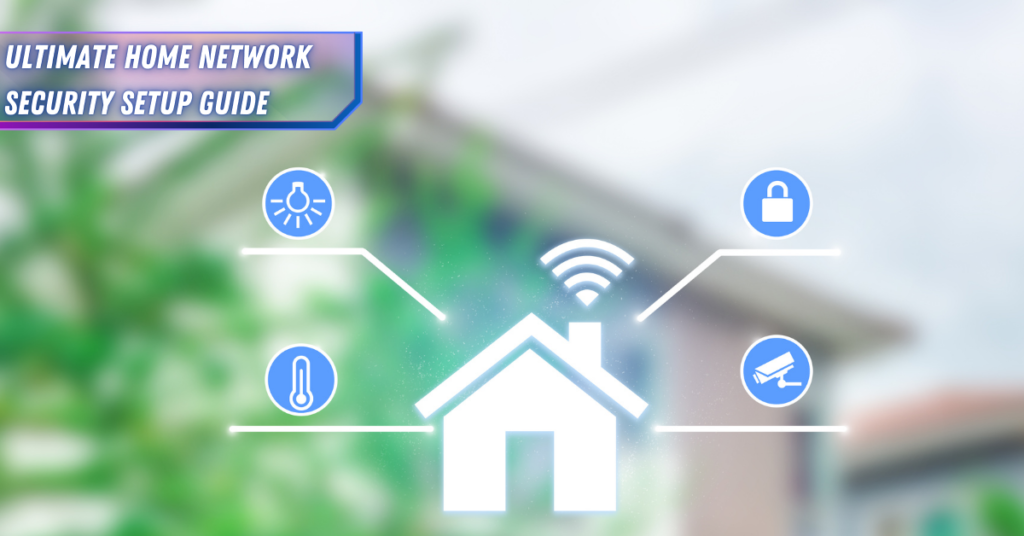Let me tell you something that still keeps me up at night – the day I discovered someone had been accessing my work files through my unsecured home network. Yikes! As someone who’s been working remotely for over five years and teaching cybersecurity basics to my fellow remote workers, I’ve learned that securing your home office doesn’t have to be rocket science. But here’s the kicker: according to IBM’s latest report, remote work-related breaches are costing companies a whopping $4.2 million per incident on average!. In this post I’ll share some cybersecurity tips for remote work.
Let’s dive in.
Types of Security Risks with Work From Home
Boy, do I have some stories about security risks! Just last month, one of my colleagues clicked on what looked like a Microsoft Teams notification – spoiler alert: it wasn’t really Teams. Let me break down the main threats I’ve seen in my years of remote work:
Phishing and Social Engineering
These attacks have gotten super sophisticated lately. I’m talking about:
- Fake emails that look exactly like they’re from your boss (I almost fell for one asking for “urgent” gift cards)
- Impersonation of collaboration tools like Slack or Teams
- Voice phishing (or “vishing”) calls pretending to be IT support
- Texts claiming to be from your company’s security team
Unsecured Home Networks
Your home network can be like a leaky ship if you’re not careful. Common issues include:
- Outdated router firmware with known vulnerabilities
- Weak WiFi passwords (looking at you, “password123”!)
- Unsecured IoT devices acting as backdoors
- Neighbors potentially accessing your network
Device-Related Risks
Working from home often means using multiple devices, which creates new challenges:
- Personal devices mixing work and private data
- Outdated software and missing security patches
- Family members using work devices (my kid once almost sent an email to my entire company!)
- Lost or stolen devices containing sensitive information
Cloud Storage Vulnerabilities
The cloud is convenient, but it comes with risks:
- Accidental file sharing with the wrong people
- Using personal cloud accounts for work data
- Unsecured file sharing links
- Synchronization across unauthorized devices
Video Conferencing Security
Remember when video call bombing was a thing? While services have improved their security, risks still exist:
- Unauthorized meeting access
- Screen sharing accidents (we’ve all been there!)
- Sensitive information visible in background
- Recording storage and sharing issues
Human Error
I hate to say it, but we’re often our own worst enemy when it comes to security. Common mistakes include:
- Sharing sensitive information in personal chats
- Reusing passwords across multiple accounts
- Writing down passwords on sticky notes
- Forgetting to lock computers when stepping away

Setting Up a Secure Home Office Network
I remember when my router was still using the default password (I know, I know – rookie mistake!). These days, I’m much more careful about network security, and you should be too. Here’s what you need to know:
Secure Your Router
First things first – your router is like the front door to your digital home. Make sure you:
- Change that default password (seriously, do it right now!)
- Enable WPA3 encryption if your router supports it
- Update your router’s firmware regularly
Create Network Segments
Think of network segmentation like having different rooms in your house. You wouldn’t keep your valuable work documents in the same place as your kids’ gaming console, right? I learned this the hard way when my teenager’s infected gaming laptop nearly compromised my work files.
- Set up a separate network for work devices
- Create a guest network for visitors and IoT devices
- Use VLAN configurations if your router supports them
Essential VPN and Remote Access Security
Remember that time I accessed sensitive work files using public WiFi at my local coffee shop? Yeah, not my proudest moment. Here’s what I’ve learned since then:
VPN Best Practices
A VPN is your best friend when working remotely. Trust me on this one!
- Always connect to your company VPN before accessing work resources
- Choose a reliable VPN provider if your company doesn’t provide one
- Keep your VPN software updated – I set a monthly reminder on my phone
Multi-Factor Authentication
I used to think MFA was annoying (who wants to enter an extra code, right?). But after a close call with a phishing attempt, I’m now its biggest fan.
- Enable MFA on all work-related accounts
- Use authenticator apps instead of SMS when possible
- Keep backup codes in a secure location
| Related: Two-Factor Authentication Methods Compared: A Complete Guide
Securing Work Devices at Home
My cat once knocked my work laptop off the desk (she’s fine, the laptop… not so much). That taught me a valuable lesson about physical security too!
Device Protection
- Use strong passwords and change them regularly
- Enable automatic updates (I schedule them for after work hours)
- Install company-approved antivirus software
- Keep your devices physically secure (away from cats, if possible!)
BYOD Security
If you’re using personal devices for work:
- Create separate user profiles for work and personal use
- Follow your company’s BYOD policies
- Keep work and personal data strictly separated
| Related: Why You Need to Separate Work and Personal Devices In 2025
Safe Data Management Practices
Cloud Storage Security
I learned this one the hard way – never store sensitive documents in your personal cloud storage! Instead:
- Use company-approved cloud solutions
- Enable encryption for stored files
- Regularly audit your shared files (you’d be surprised what you find!)
Email Security
Email is still the number one vector for cyberattacks. Here’s what I do:
- Double-check email recipients before sending
- Never click on suspicious links (even if they look legitimate)
- Use email encryption when handling sensitive information
Cybersecurity Training and Awareness
The best security tools in the world won’t help if we don’t know how to use them properly. I make sure to:
- Take all required security training (yes, even the boring ones!)
- Stay updated on latest threats
- Practice good cyber hygiene daily
Regular Security Checks
I’ve made it a habit to do weekly security check-ups:
- Verify all software is updated
- Check for unusual network activity
- Review access logs
- Update passwords if needed
Wrapping Up: Your Next Steps
Listen, I know this might seem like a lot to handle. But trust me, once you establish these security habits, they become second nature. Start with the basics – secure your router, set up a VPN, and enable multi-factor authentication. Then gradually implement the rest of these practices.
Remember, cybersecurity isn’t just about protecting data – it’s about protecting your peace of mind while working from home. Take it from someone who’s learned these lessons the hard way: a little preparation goes a long way in preventing major headaches down the road.
Want to get started right away? Begin with a simple security audit of your home office setup. Check your router settings, update your passwords, and make sure your VPN is working correctly. Small steps today can prevent big problems tomorrow!



